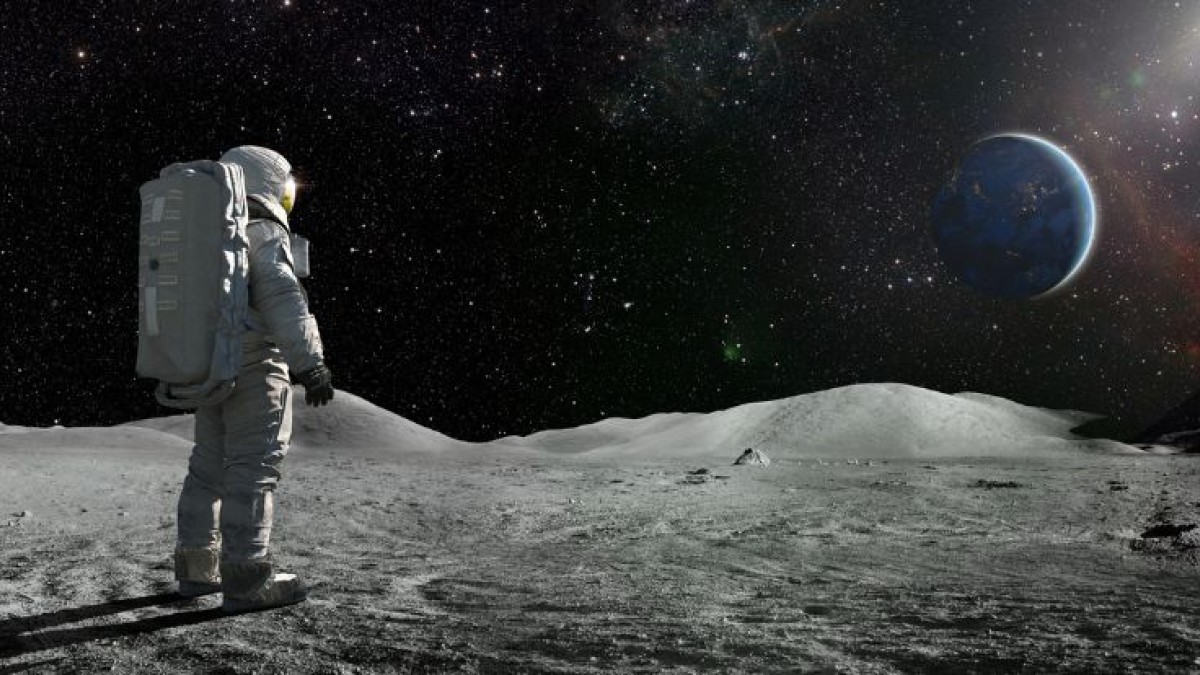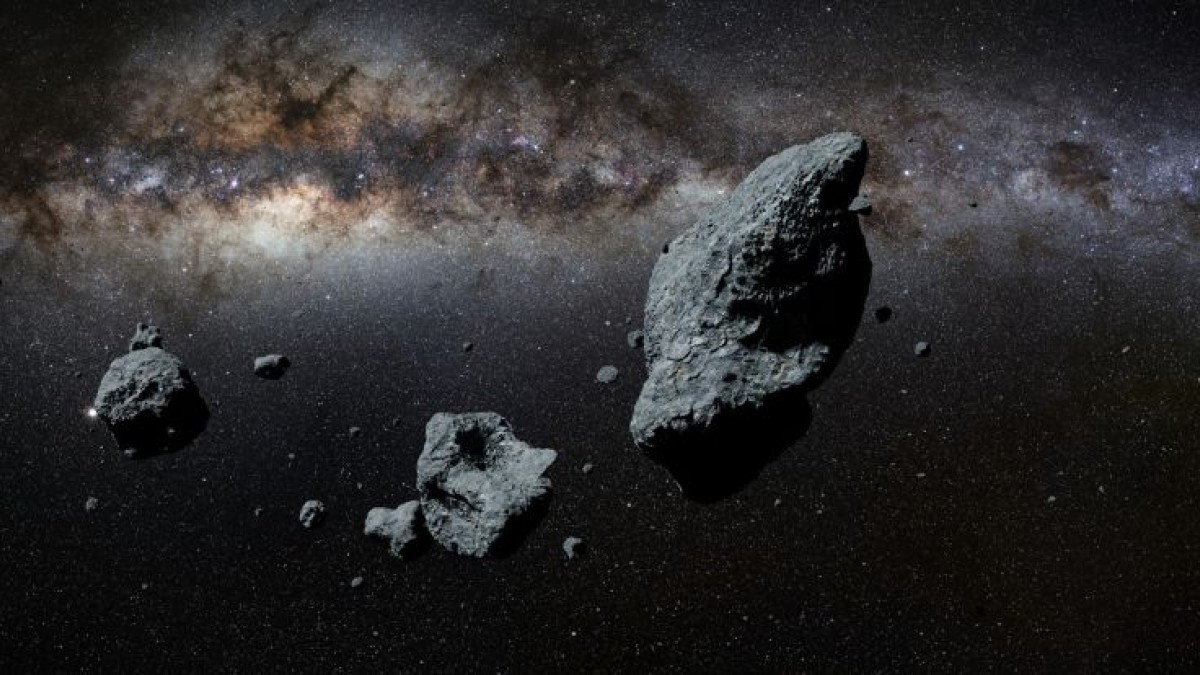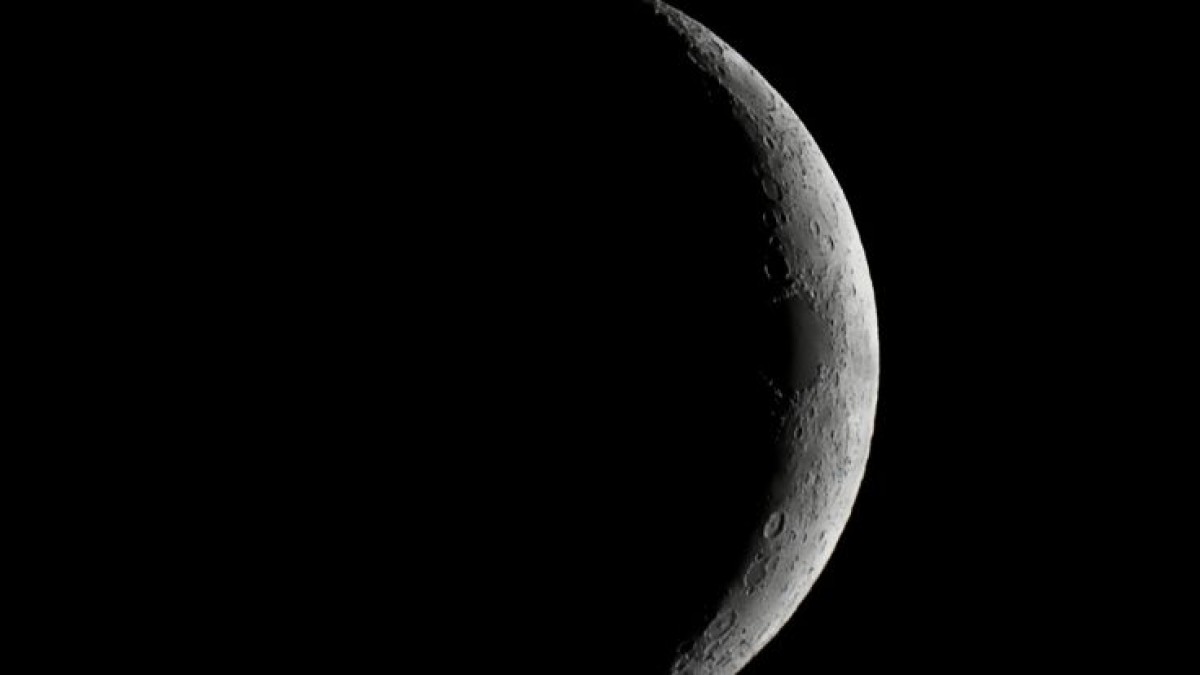Moon shot on National Moon Day
It’s National Moon Day, and as the NASA Artemis programme works towards returning astronauts to the lunar surface, engineers from Surrey Space Centre at the University of Surrey are exploring how society can gain the most from that return.

NASA is returning people to the Moon via the Artemis programme
It’s more than 50 years since humans walked on the Moon but NASA hopes to change that as soon as 2025.
“In the Cold War people talked about the Space Race,” says Dr Nicola Baresi, a lecturer in orbital mechanics at Surrey Space Centre. “Now there’s a new Moon Race, but where the first lunar missions were about exploration, current projects focus more on lunar exploitation.”
The nature of that exploitation lies in two key areas: firstly, scientific discovery to understand the origin of universe, and secondly utilising the resources found on the Moon for sustainable mission operations and technological development. This will enable the Moon as a stepping-stone to Mars, with human sights set on interplanetary exploration.

Asteroids and meteoroids replenish the Moon's supplies of water ice and rare materials
“The extremely thin atmosphere of the Moon does not protect it from the constant bombardment of asteroids and meteoroids that keep replenishing its surface with supplies of water ice and rare materials”, says Dr Baresi.
These rare minerals could be invaluable for progress on Earth
“For example, He3 is extremely rare on Earth but more plentiful on the Moon,” Dr Baresi explains. “It’s potentially game-changing for nuclear fusion technologies.”
Whether mining for minerals or preparing for missions headed beyond the Earth-Moon neighbourhood, humans will need somewhere safe to live where they are protected from the hostile lunar conditions. Because of the high financial and ecological cost of rocket launches, many of the resources needed to create bases and support life must be harvested locally.
“Lunar ice deposits in permanently shadowed regions are precious,” says Dr Baresi. “They could support human outposts as well as the establishment of a lunar economy. By passing a current into water ice, you can obtain oxygen and hydrogen, which give you rocket fuel.”
Dr Sungwoo Lim, Senior Lecturer in Space Applications, Exploration and Instrumentation, who recently joined Surrey Space Centre, is investigating how Moon soil can be used to build lunar bases and extract invaluable resources, such as oxygen, water and metallic elements.
“From the Apollo Moon landings, we know what lunar soil is like, and organisations including NASA have developed more than 30 simulated variations of it,” Dr Lim says. “We’re using these and testing how we can use microwaves to heat the soil, create usable construction components and extract resources.”
As well as doing lab experiments and computational simulations on Earth, Dr Lim is developing a small payload which could go to the Moon to conduct tests. He is also investigating the use of lunar soil in 3D printing.

Lunar exploration is hugely inspiring.
“Space exploration is hugely inspiring,” he continues, “and it can lead to ground-breaking discoveries that can affect our way of living on Earth. Consistent, long-term investment will ensure we maximise the benefits from scientific and technological developments.”
But not at any price.
“With many nations and numerous private companies wanting to join the new Moon Race and exploit the position of and resources on the Moon, we need an updated legal framework to clarify who owns what and who should benefit from lunar endeavours,” warns Dr Baresi. “The current framework says that the Moon belongs to everyone and no-one. But with competition hotting up, we need more robust international legislation to ensure sustainable use of the Moon and access to all who want to use it responsibly.”
Featured Academics
Media Contacts
External Communications and PR team
Phone: +44 (0)1483 684380 / 688914 / 684378
Email: mediarelations@surrey.ac.uk
Out of hours: +44 (0)7773 479911

